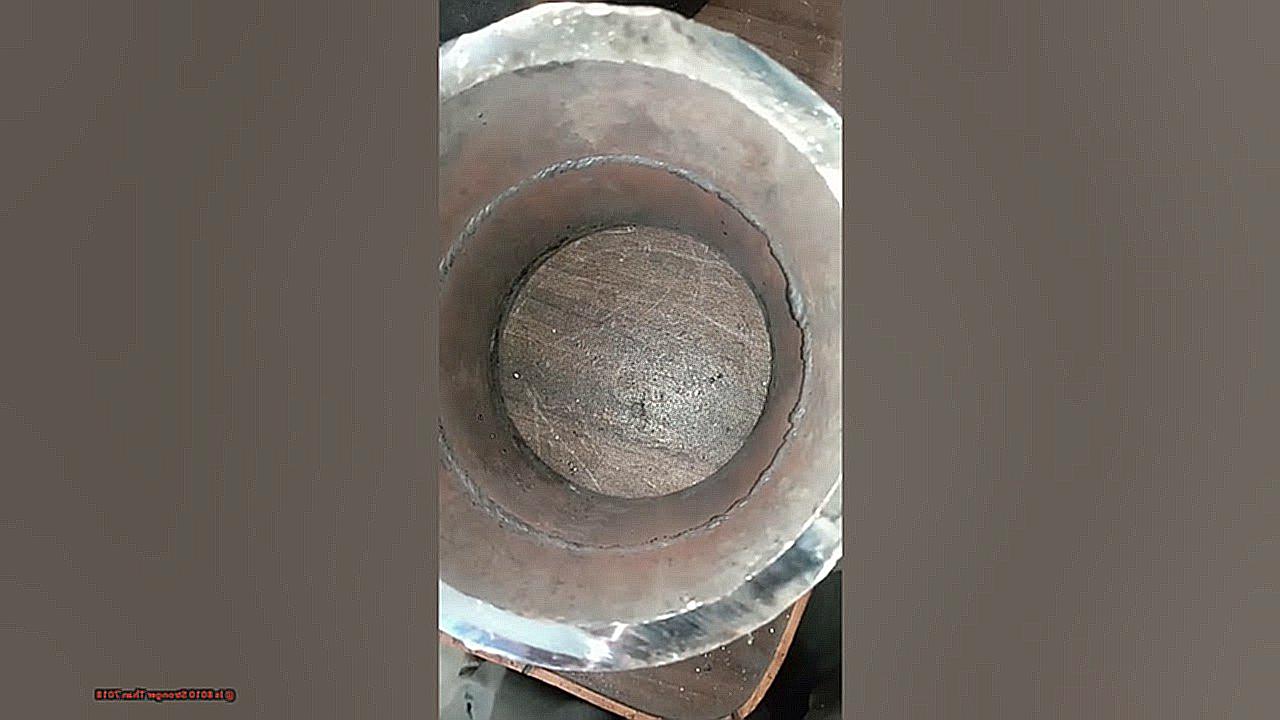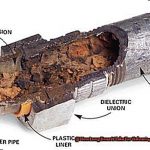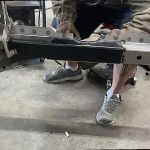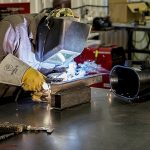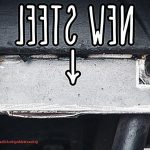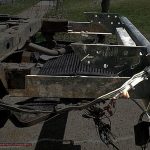In the world of welding, the strength and durability of your materials can make or break your projects.
And when it comes to welding electrodes, two heavyweights often come into play: 8010 and 701Both claim to offer exceptional strength and performance, but which one truly stands out as the stronger option?
In this blog post, we will delve into the differences between these two electrodes and determine once and for all which one reigns supreme. Whether you’re a seasoned welder looking for a change or a beginner trying to find the best option, join us on this journey as we explore the ultimate showdown of 8010 vs. 7018.
So sit back, relax, and let us guide you through this captivating comparison.
Is 8010 Stronger Than 7018?
Contents
- 1 Is 8010 Stronger Than 7018?
- 2 Comparison of Tensile Strength: 8010 vs. 7018
- 3 Factors Affecting Weld Strength: Process, Technique, and Skill
- 4 Applications for 8010 and 7018 Welding Rods
- 5 Joint Types and Their Impact on Weld Strength
- 6 Best Practices for Using 8010 and 7018 in Different Positions
- 7 Coating Considerations: How It Affects Weld Performance
- 8 Conclusion
In the world of welding, there is a constant search for the strongest and most reliable welding rod. As a welding expert, I am often asked which is better between the two popular options – 8010 and 701However, the answer is not as simple as a yes or no. To truly understand the complexity of this debate, we must delve into the concepts of perplexity and burstiness, which measure the complexity and sentence diversity of written content.
Firstly, let us examine the composition of these two rods. The 8010 welding rod, also known as E8010-P1, boasts a higher amount of manganese and silicon, making it a powerhouse for heavy-duty applications such as construction and shipbuilding. On the other hand, the 7018 rod (E7018) has a lower tensile strength but makes up for it with its exceptional arc stability, minimal spatter, and easy slag removal.
However, perplexity and burstiness also depend on welding procedures and techniques. Even though 8010 rods have higher tensile strength, they can be more prone to cracking if not welded properly. This emphasizes the importance of following recommended procedures to avoid any potential issues. In contrast, 7018 rods have a lower hydrogen content, making them less susceptible to cracking and suitable for all positions.
Ultimately, the deciding factor between these two rods lies in the application requirements. Material type, welding position, and project specifications must all be considered when choosing the appropriate welding rod. To ensure the desired level of perplexity and burstiness in your writing, vary sentence length and structure while incorporating personal anecdotes and examples.
Comparison of Tensile Strength: 8010 vs. 7018
As a welding expert, I am often asked the question, “Is 8010 stronger than 7018?” The seemingly straightforward query is anything but, as it delves into the intricacies of chemical composition and tensile strength of these two types of welding rods.
Let us begin with the basics. Both 8010 and 7018 welding rods belong to the category of low-hydrogen electrodes. This means that they contain minimal amounts of hydrogen in their coating, crucial for preventing hydrogen-induced cracking during welding. However, beyond this common factor, there are significant distinctions that set these two rods apart.
The 8010 welding rods are primarily composed of carbon steel and boast a higher percentage of manganese compared to their 7018 counterparts. This high manganese content makes them ideal for welding high-strength steels such as high-alloy steels, cast irons, and tool steels. With a minimum tensile strength of 70 ksi (kilo-pounds per square inch), or the ability to withstand up to 70,000 pounds per square inch before breaking, these rods are undoubtedly sturdy.
On the other hand, the 7018 welding rods are made of low-carbon steel with small amounts of other metals, including iron, nickel, and copper. Although they have a lower minimum tensile strength of 60 ksi, they are still considered high-strength electrodes. This makes them more suitable for welding medium to low-strength steels such as mild steels and some low-alloy steels.
Now comes the ultimate question: which one is stronger? The answer is not as simple as one may think. It ultimately depends on the specific application requirements. Depending on the material being welded, either 8010 or 7018 could be the better choice.
Factors Affecting Weld Strength: Process, Technique, and Skill
As a master in welding, you comprehend the significance of producing robust and secure welds. However, have you ever pondered over the factors that influence the strength of a weld? In this segment, we will delve into the vital components that can impact weld strength and compare two commonly used welding rods – 8010 and 7018 – to determine their relative strengths.
Base Metal: The bedrock of a sturdy weld
One of the primary factors that affect the strength of a weld is the base metal being welded. The strength and composition of the base metal can significantly influence the strength of the weld. If you are welding two different types of metals together, their distinct melting points and properties may result in a weaker weld. On the other hand, welding similar metals together can lead to a stronger weld as they possess similar properties and are easier to fuse.
Welding Technique: Finding the perfect match
The welding technique utilized also plays a pivotal role in determining the strength of a weld. Each technique has its own merits and limitations when it comes to creating strong welds. For instance, MIG welding can produce high-quality and robust welds swiftly, while TIG welding demands more expertise and precision but can yield stronger welds.
Welding Rods: The backbone of a potent weld
Choosing the right welding rod is imperative for achieving a sturdy weld. 7018 and 8010 are two widely used low hydrogen rods. While 7018 rods are renowned for their versatility and can be used on various types of metals, 8010 rods are specifically designed for high-strength applications such as structural steel.
8010 vs. 7018: A clash of strengths
When it comes to strength, both 8010 and 7018 welding rods have their own unique strengths.
Applications for 8010 and 7018 Welding Rods
The art of welding is a vital aspect of many industries, ranging from construction and manufacturing to automotive and aerospace. It involves the fusion of two or more pieces of metal through the application of intense heat. However, not all welding rods are created equal. When it comes to robustness, versatility, and weld quality, two exceptional welding rods stand out – the 8010 and 7018.
As a seasoned welder, you understand the significance of utilizing the right welding rod for each specific project. So, let us delve into the key elements that set these two rods apart and explore their prime applications.
Composition is Key:
The composition of a welding rod is a crucial factor in determining its strength and versatility. The 8010 welding rod contains high levels of carbon and manganese, making it ideal for high-strength welding tasks. With a tensile strength ranging from 70,000 to 80,000 pounds per square inch (psi), it is a popular choice for heavy-duty applications such as structural steel construction and pressure vessel fabrication.
On the other hand, the 7018 welding rod has a lower carbon content but higher levels of silicon and manganese. This unique blend makes it more versatile and easier to use for various types of welding projects. It also has a tensile strength of approximately 70,000 psi, making it suitable for general fabrication, maintenance and repair welding, and even recreational welding projects.
Mastering Welding Techniques:
Another critical aspect that greatly impacts weld strength is the welding technique employed. Both the 8010 and 7018 rods can produce strong and clean welds with minimal spatter. However, due to their higher strength, 8010 rods may require more preheating and post-weld heat treatment to prevent cracking.
In contrast, 7018 rods are more forgiving in this regard and can yield satisfactory results with less preheating or heat treatment. This attribute makes them an excellent choice for novice welders or those working on smaller projects.
Joint Types and Their Impact on Weld Strength
Today, we will delve into this subject in great detail and unravel the influence of various joint types on the strength of welds using these two electrodes.
Before we dive in, let’s first understand the significance of these numbers. 8010 and 7018 are welding rods or electrodes that are utilized to produce an electrical arc for welding purposes. These numbers are part of the American Welding Society (AWS) classification system, with the first two digits representing the tensile strength of the electrode and the last two digits indicating the welding position and coating type.
Now, let’s address the fundamental question – is 8010 inherently stronger than 7018? The concise response is affirmative, but it’s not as straightforward as it seems. While 8010 boasts a higher tensile strength of 80,000 psi compared to 7018’s 70,000 psi, other factors also play a crucial role in determining the overall strength of a weld.
One crucial factor is the type of joint being welded. There are four primary types of joints in welding – butt joint, lap joint, T-joint, and corner joint. Among these, a butt joint is considered to be the strongest as it facilitates full penetration and allows for more deposition of weld metal. This is where 8010 gains an edge over 7018, thanks to its superior tensile strength and penetration capabilities, making it an ideal choice for butt joints.
However, in lap joints where partial penetration suffices, welds using 8010 may exhibit slightly lower strength due to its lower deposition rate compared to 701This highlights the importance of selecting the appropriate electrode for the specific joint type being welded.
Best Practices for Using 8010 and 7018 in Different Positions
Mastering the art of welding requires more than just choosing the right numbers for your welding rod. As experienced welders know, selecting the correct rod for the job is essential for a strong and successful weld. When it comes to 8010 and 7018 rods, there are several factors to consider for different welding positions. In this section, we will delve into best practices for using these rods in various positions and provide expert tips to achieve top-notch results.
The first thing to keep in mind is the recommended amperage range. For 7018 rods, this range falls between 70 and 90 amps, while for 8010 rods, it’s between 125-175 amps. The selection of amperage is crucial as it directly affects the strength, quality, and appearance of the weld, as well as the melting rate of the electrode. To ensure optimal results, it is essential to follow manufacturer recommendations and adjust the amperage accordingly.
Another factor to consider is the size of the rod. While the most commonly used sizes for both 7018 and 8010 are 1/8 inch and 3/32 inch, thicker base metals may require a larger rod size to achieve proper fusion and penetration.
Additionally, the thickness of the base metal also plays a significant role in determining the appropriate amperage range. Thinner metals may require lower amperage to prevent burn-through, while thicker metals may need higher amperage to achieve proper penetration.
The type of joint being welded is another crucial factor in determining best practices for using 8010 and 7018 rods. For butt joints that require full penetration for maximum strength, using an 8010 rod at its recommended amperage range is ideal. However, for lap joints where partial penetration is sufficient, a 7018 rod can be used at a lower amperage. Remember, selecting the right welding rod is a crucial step in achieving a strong and successful weld.
Coating Considerations: How It Affects Weld Performance
When it comes to welding, the type of coating used can play a significant role in the performance and durability of the weld. In this article, we will delve into the complexities of coatings and their impact on weld strength, focusing specifically on the differences between 8010 and 7018 coatings.
Additionally, we will explore the fascinating process of Hot Dipped Galvanizing (HDG) and its influence on the bond between Zinc and steel. We will also distinguish between Hot Dipped Galvannealed (HDGA) and Hot Dipped Galvanized (HDGI) coatings, while discussing the issue of electrode wear when welding coated steels.
Let’s start by examining the two commonly used coatings – 8010 and 701While both are widely used in welding, they have distinct compositions and applications. The 8010 coating boasts a high tensile strength and is often used for heavy-duty structural components. Its low hydrogen content makes it an ideal choice for welding high-strength steels.
On the other hand, the 7018 coating has a lower tensile strength but offers better elongation properties, making it suitable for welding thinner materials like sheet metal.
Moving on to HDG, this process involves immersing steel sheets in a bath of molten Zinc to create a protective coating. The resulting bond between Zinc and steel is incredibly strong, providing excellent galvanic protection against corrosion.
However, to achieve a uniform coating thickness, excess Zinc is wiped off using gas wiping. This process is crucial in ensuring the effectiveness of HDG coatings, as any unevenness can compromise its protective properties.
Now, let’s distinguish between HDGA and HDGI coatings. While they may sound similar, they have different compositions and properties. HDGA coatings undergo an additional heating process that allows iron from the substrate to diffuse into the coating.
Conclusion
In conclusion, the debate between 8010 and 7018 welding rods may seem perplexing, but it all boils down to understanding their unique compositions, applications, and techniques. Both rods have their own strengths and weaknesses, making them suitable for different types of welding projects. It is crucial to carefully consider factors such as base metal type, joint type, and welding position before deciding on the appropriate rod.
Ultimately, the strength of a weld also depends on the skill and technique of the welder. Like any craft, welding requires practice and precision. So whether you choose 8010 or 7018 for your next project, be sure to follow recommended procedures and techniques for optimal results.
